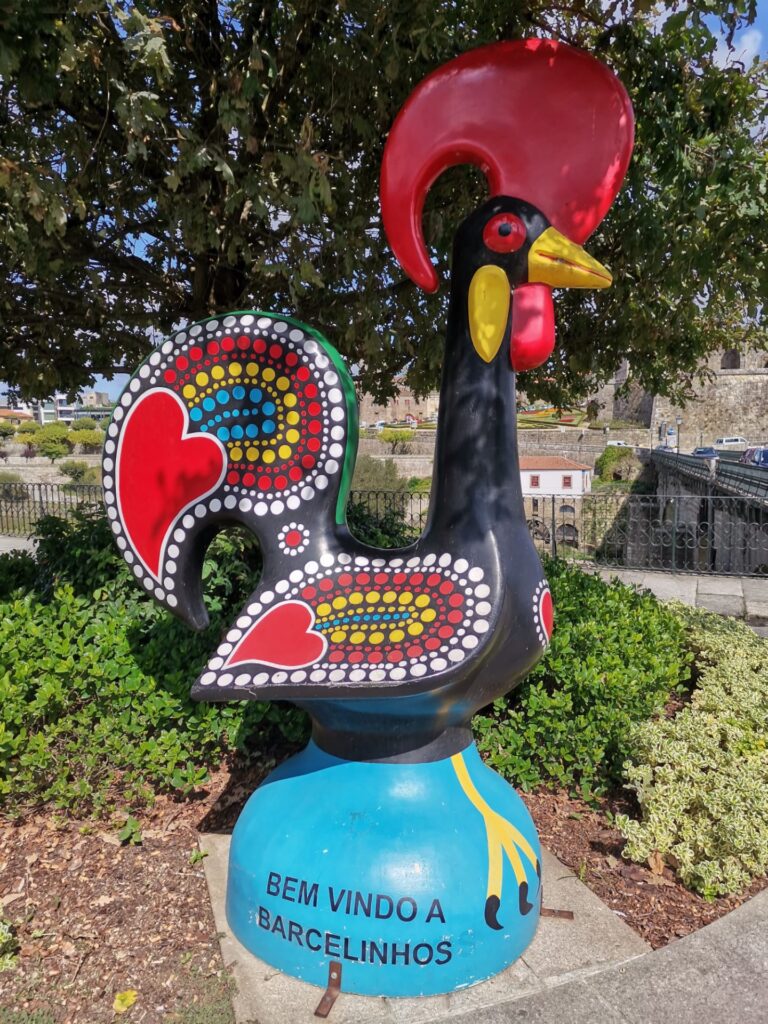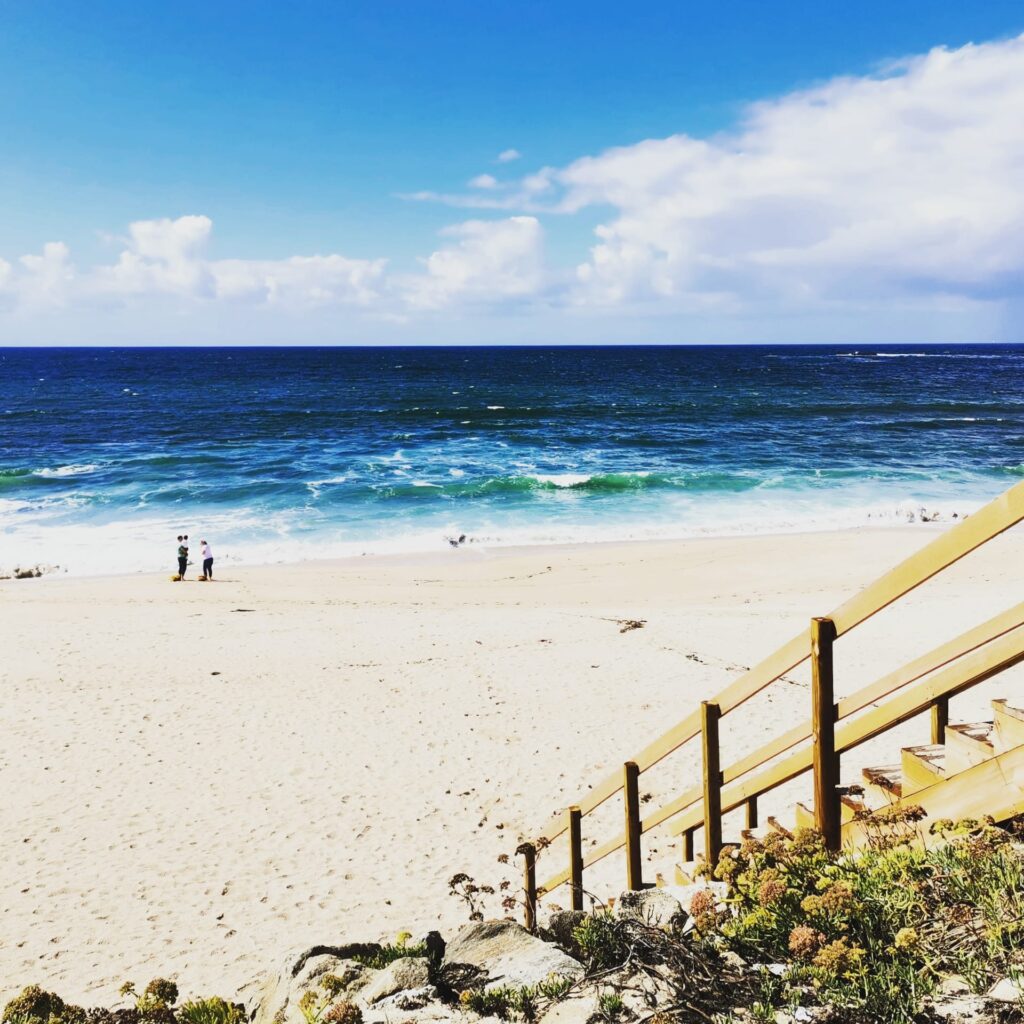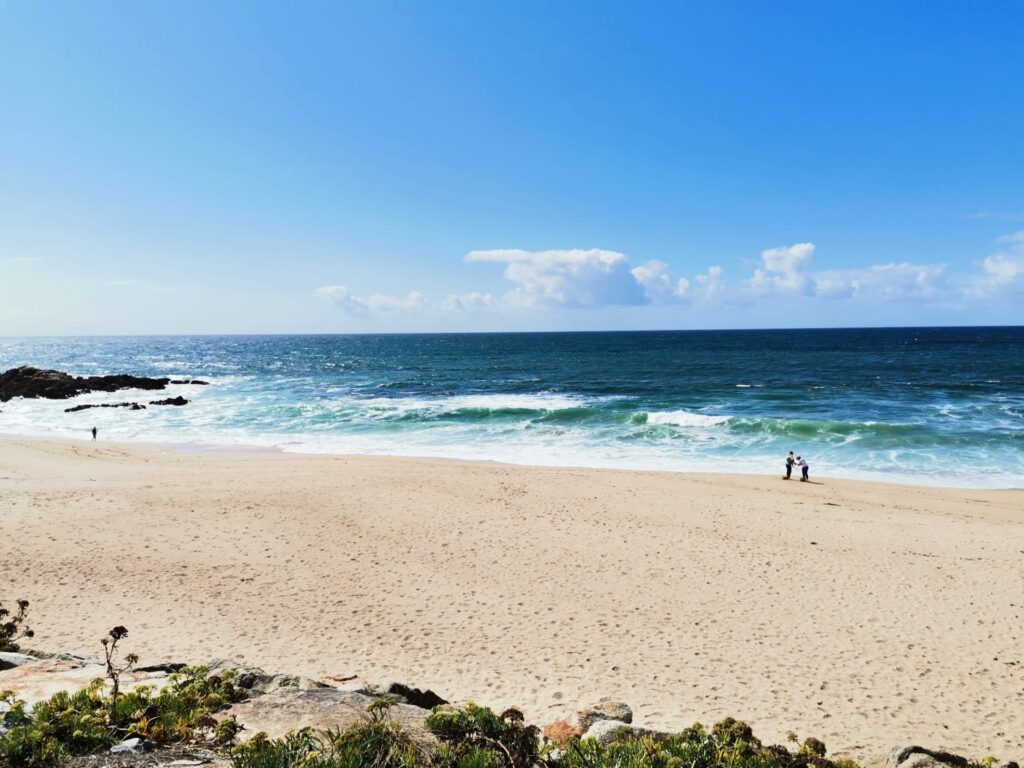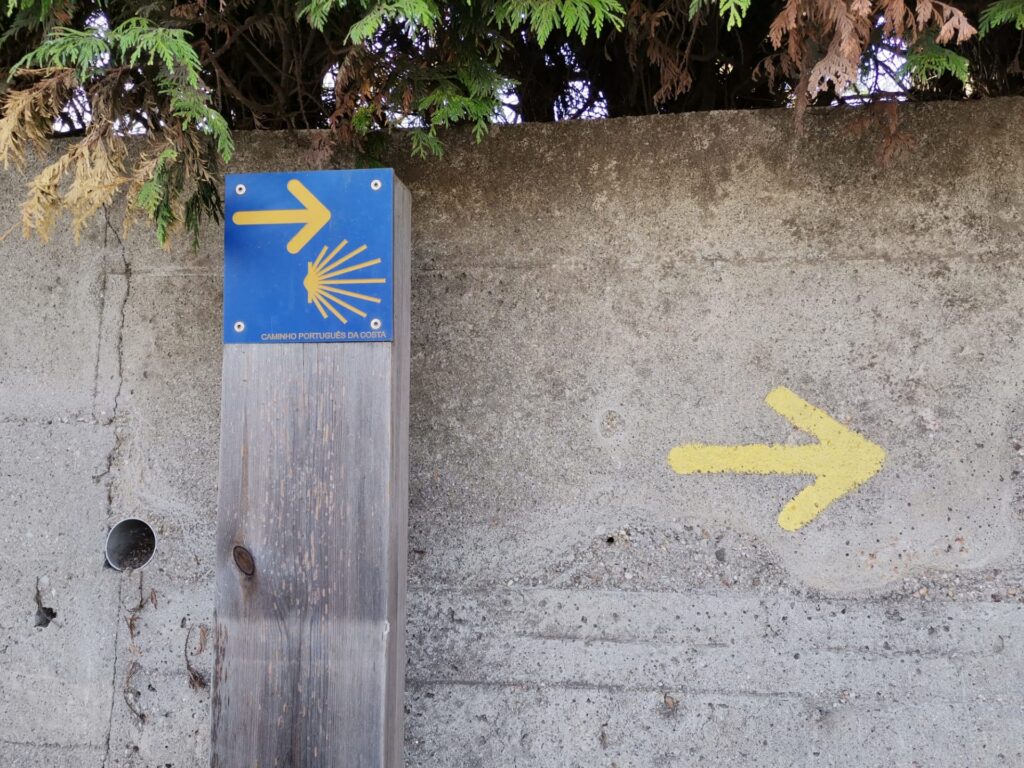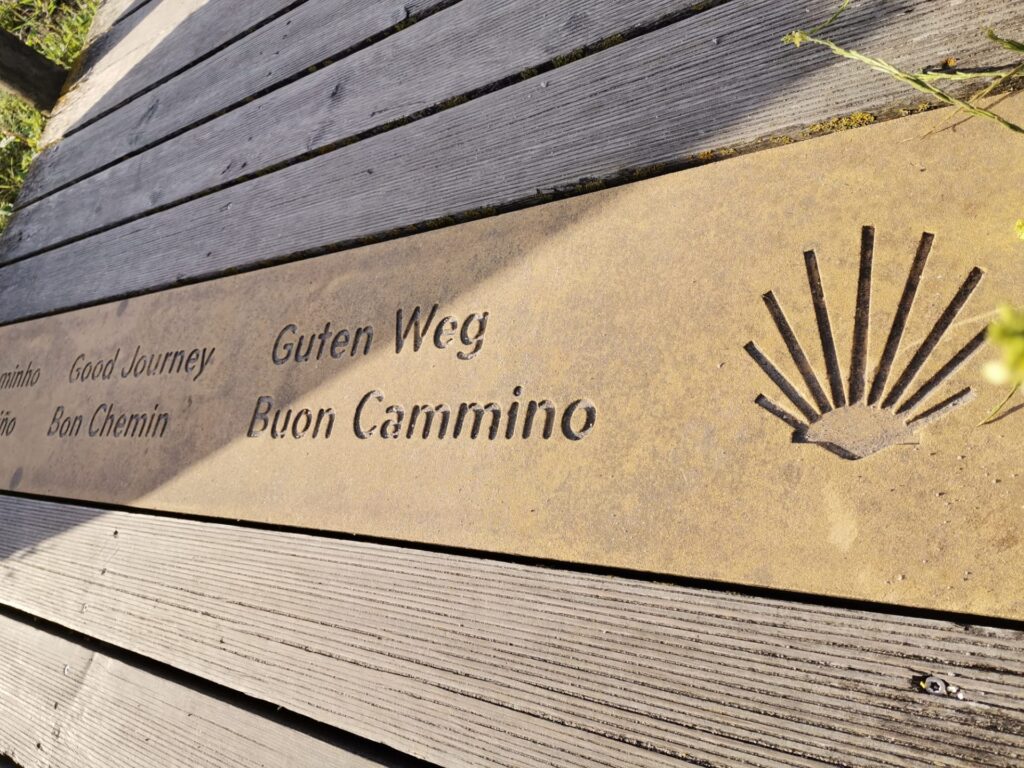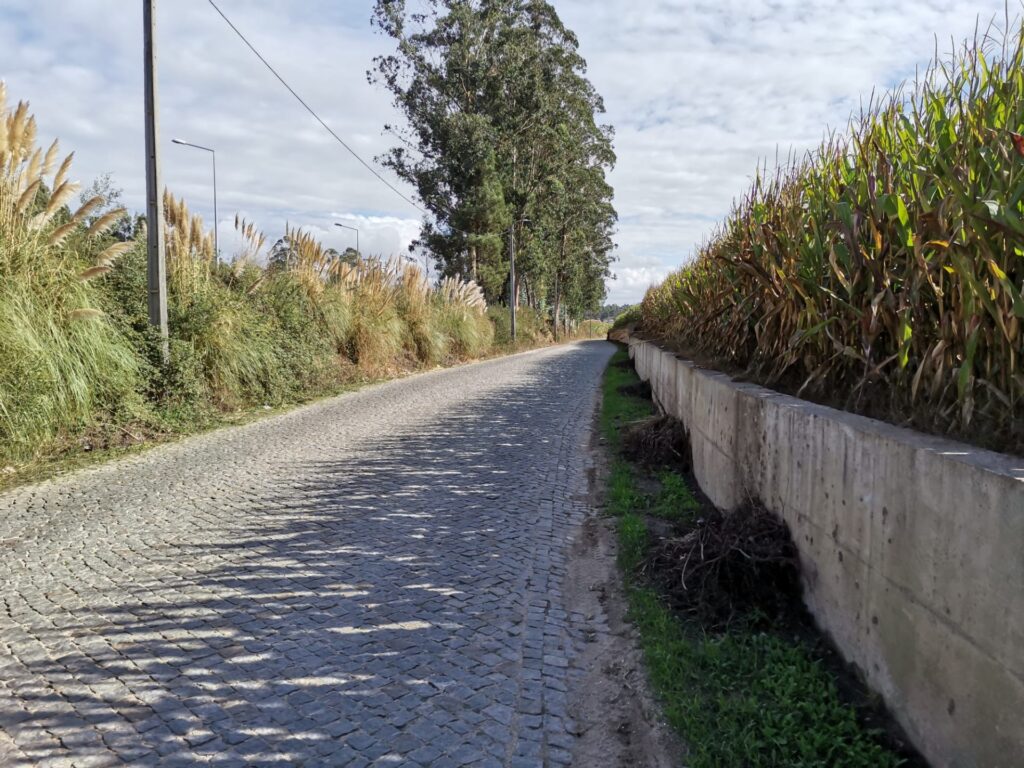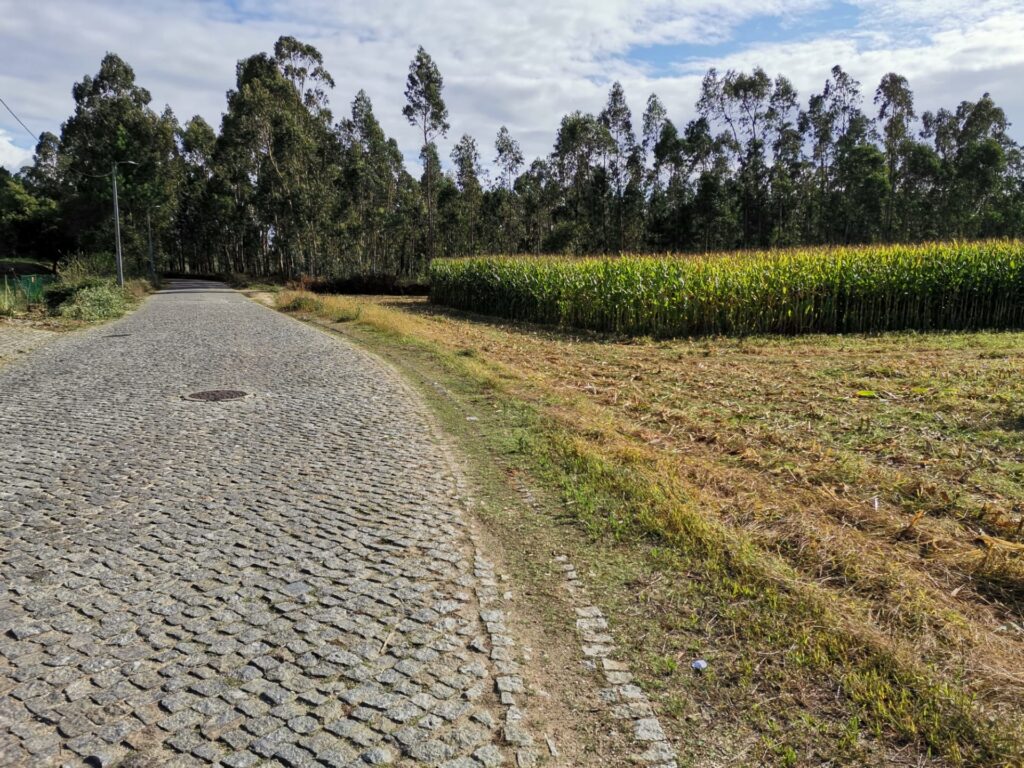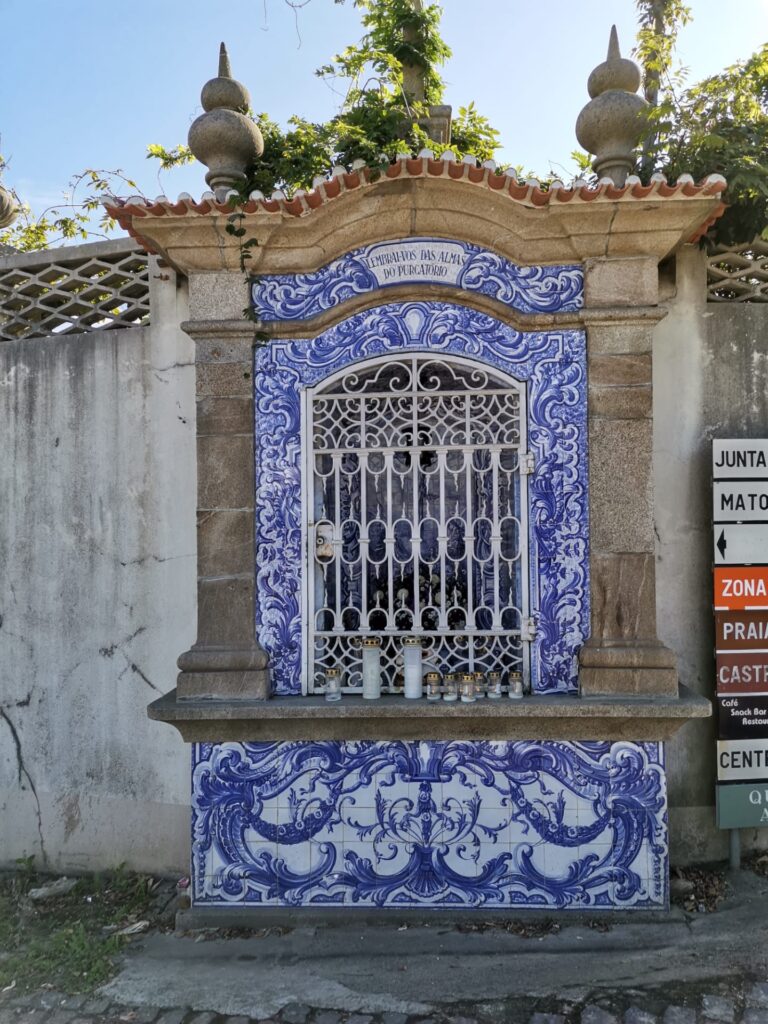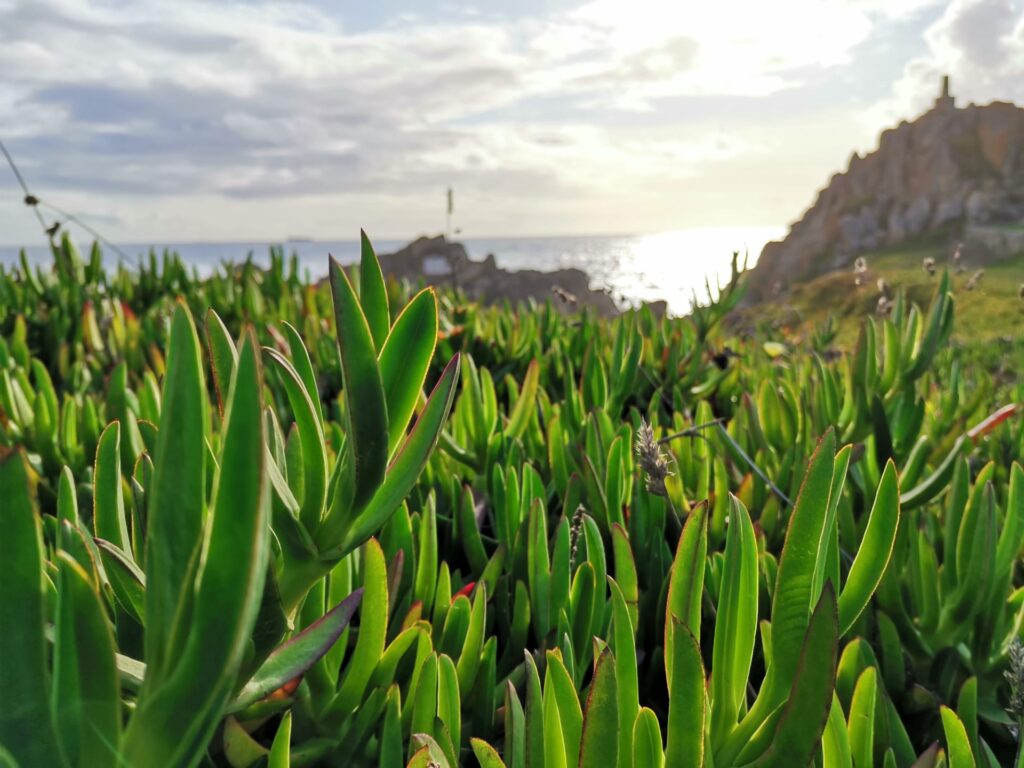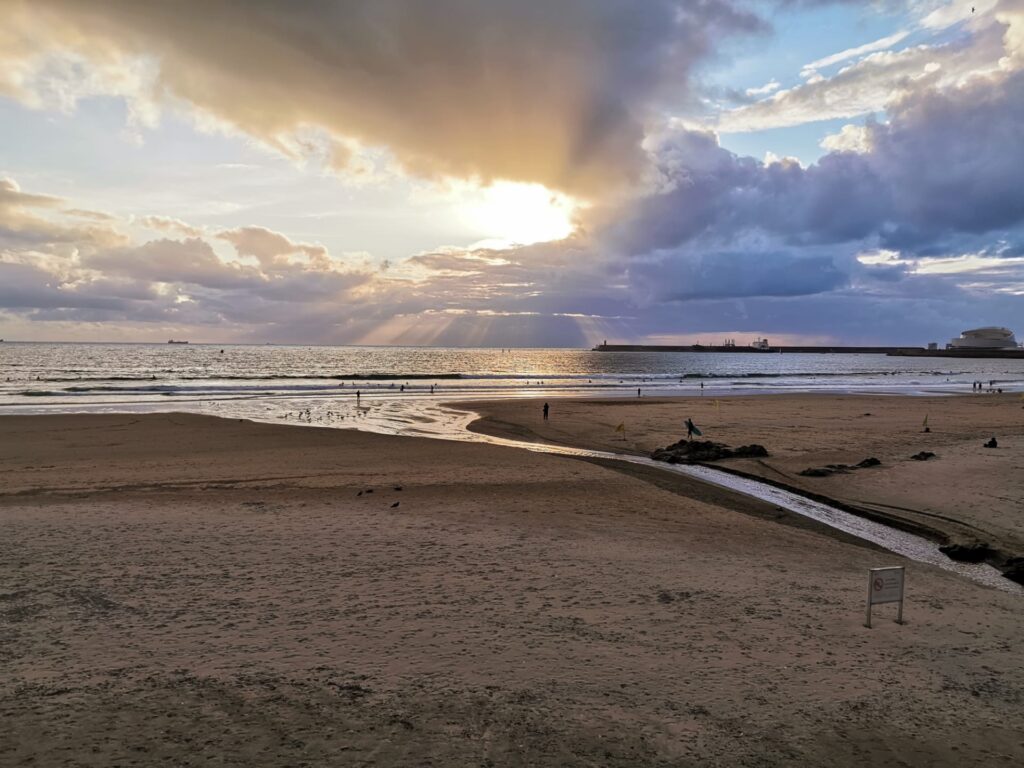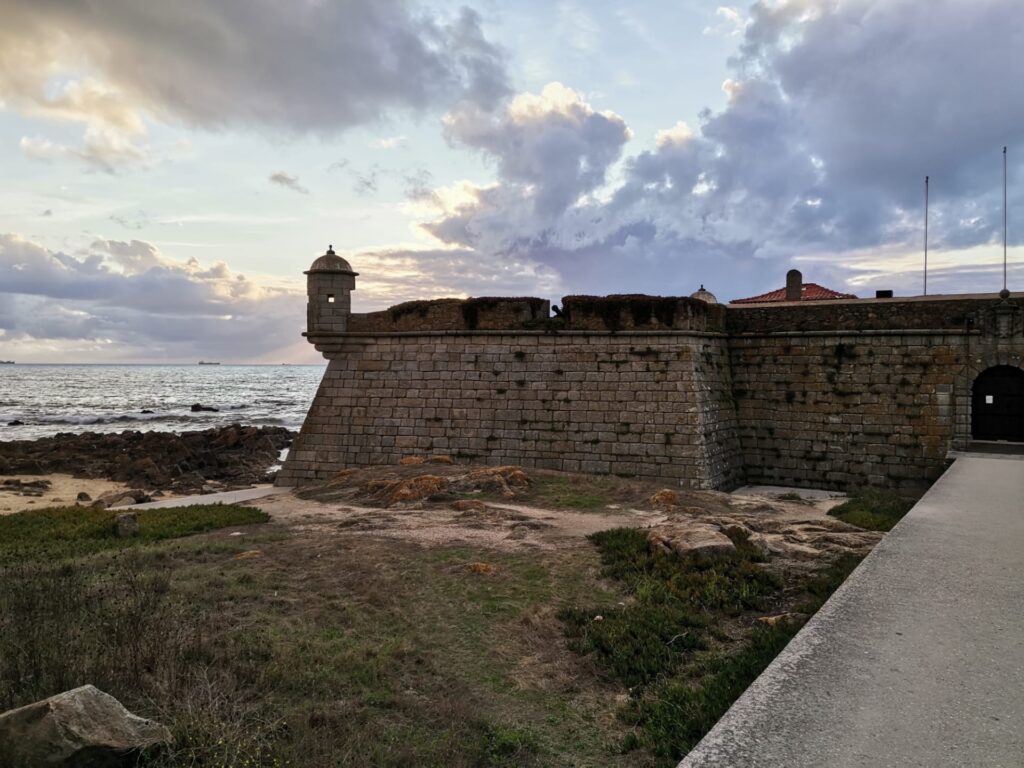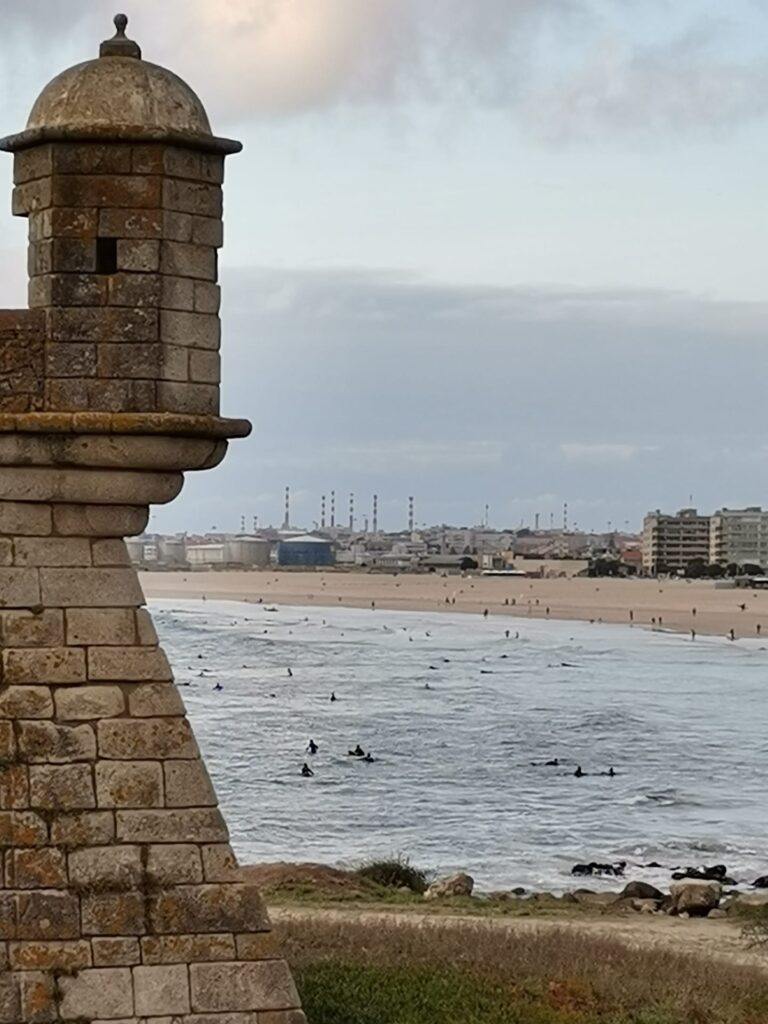Alexa Travels > The Journey > Cycling Portugal > Day 24 – Back to the Atlantic
Day 24 – Back to the Atlantic
Starting Point: Braga
Ending Point: Porto
Today’s Distance: 93 km
Total Distance: 1,544 km
Rain greeted me when I awoke in Braga so I relaxed for a bit as it blew over. After the skies cleared, I headed out to Barcelos in search of a giant rooster. Barcelos is home to an icon of Portugal, the Barcelos Rooster.
As legend has it, sometime back in the 15th century of Barcelos, an unsolved crime had frightened the townspeople from leaving their homes. An innocent pilgrim on his way back from Santiago de Compostela stopped in Barcelos to fulfill a promise he had made at the completion of his pilgrimage. Despite his explanation, the man was condemned to hang. After demanding to speak with the judge who sentenced him, his guards relented and took him to the magistrate, who was having a banquet at the time. The pilgrim swore he knew nothing of the crimes, pointed to a cooked rooster on the banquet table, and, as proof of his innocence, stated that the rooster would crow at the hour of his hanging.
The crowd laughed at the pilgrims ridiculous premonition, but the magistrate, whose appetite had left him after the scene, had the rooster set aside. After failing to plead his case, the condemned man was taken to the gallows to be hanged, but right before the sentence was carried out, the cooked rooster stood up upon the table in front of the banquet guests and crowed. The judge dashed to the gallows and was able to save the pilgrims life only due to the rope being improperly tightened around the pilgrim’s neck. Later on, the pilgrim returned to Barcelos and sculpted a cross which he dedicated to the Virgin Mary and St. James, who he credited for his miracle. This very cross, the Cross of the Lord of the Rooster, rests today in a museum in Barcelos. More can be read of the legend here.
Now the rooster stands as a symbol for not just Barcelos but for all of Portugal. Every tourist shop in Portugal has a variety of statues, paintings, and other nick-knacks with the same basic abstract rooster shape and a variety of colorful decorations. They are all based on the statue that I was seeking today. The statue stands next to a large, weekly, open-air market, and I coincidentally arrived on the day that it was open. Vendors of all types hawked their wares, and I got to experience the hustle and bustle of a Portuguese market.
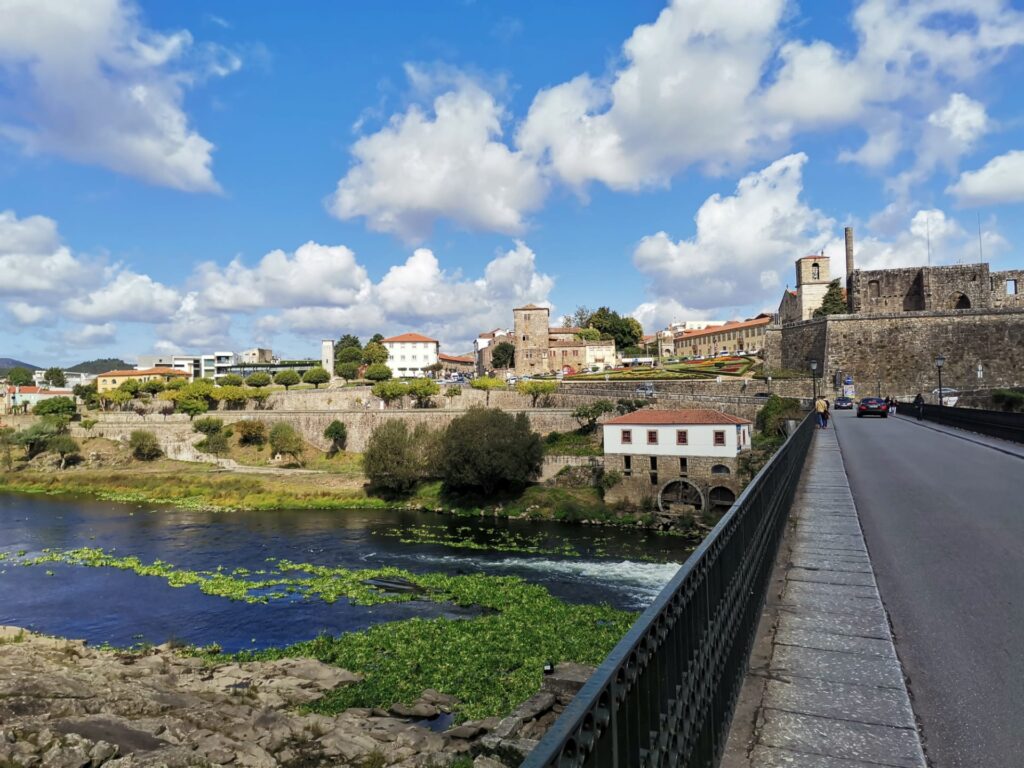
Putting Barcelos behind me, I headed out due east with a big milestone just over the horizon. I could smell it before I could see it: the powerful Atlantic Ocean, second largest body of water in the world, and integral to the history, culture, and identity of Portugal. This was my first time back on the coast since the Algarve and I was excited to be by the ocean once again. Shaka and I had returned! Almost overwhelmed with happiness, I wanted a photo to commemorate the experience, so I took my bags off Shaka, lifted him high in the air over my head, and grinned as hard as I could for a victory shot in front of the ocean. Bouyant with enthusiasm, I continued to float my way down the coast, knowing that I had just made the last big directional change of the trip.
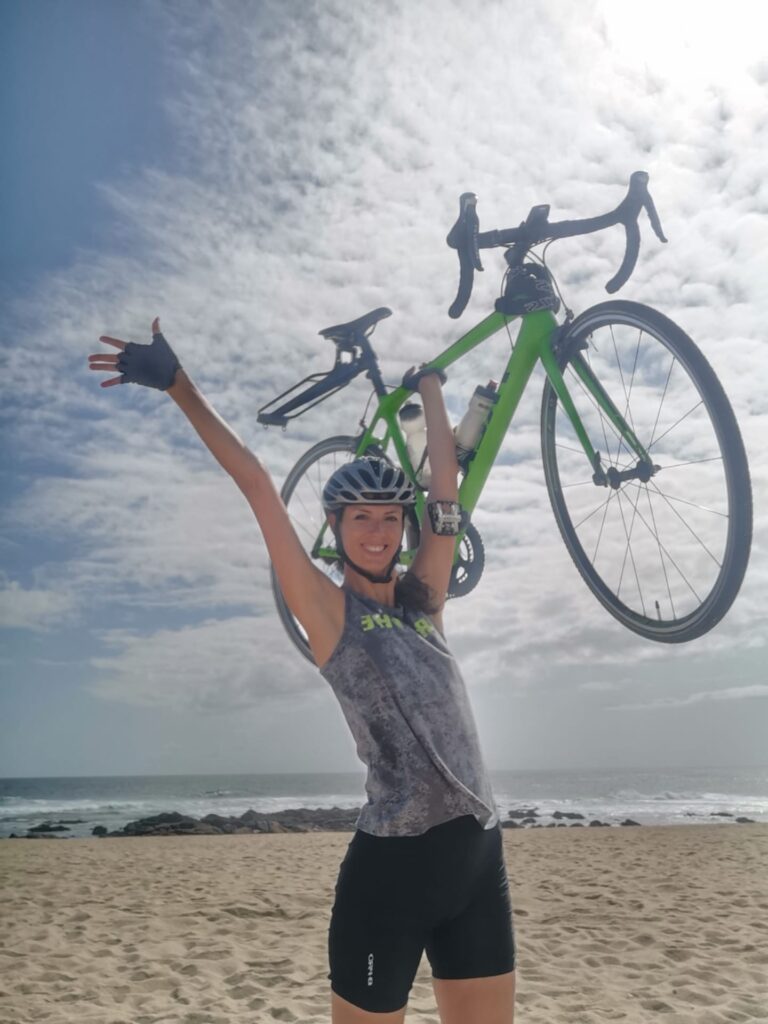
In Vila do Conde I stopped to see the Nau Quinhentista, a replica of a sailing ship from the early 16th century. The Nau Quinhentista is a carrack, a type of old ship that revolutionized the world. Carracks were the first ships which could (somewhat) reliably survive long, cross-ocean voyages while still providing cargo space for trade and conquest. They laid the groundwork for the later galleons which famously ferried Spanish and Portuguese cargo back home from around the world. Columbus’ largest of his three ships, the Santa Maria, was a carrack.

Leaving the ship, I suddenly realized just how hungry I was, so I hopped into the first restaurant I could find. That restaurant just so happened to be a sushi place, and, while it went against my typical commitment to seek out local Portuguese food, it served as a great way to celebrate being back by the ocean.

In the afternoon I took a smaller road that carried me away from the coast and back into the farmlands. Signs began popping up for the Camino de Santiago, the famous pilgrimage paths that I had seen a couple of days before. Now that I was heading south (and away from Santiago de Compostela), I was going against the arrows in my ride towards Lisbon instead of going with them as I was before.
Things were going smoothly until suddenly the road switched from paved to cobblestones. I had lots of experience dealing with cobblestones while traveling through the cities and towns of Portugal, but this road was still well outside of Porto and in the middle of farmland. Onwards and onwards the cobblestones stretched, connecting all the small villages of the area. If I were on a mountain bike, they would have been no issue at all, but on my road bike with basically no suspension, it was tough going. All together it was about eight kilometres of teeth-chattering bumpiness before I was relieved with soothing pavement once again.
High on my list of things to see today was the Casa de Chá da Boa Nova, a high-concept tea house turned restaurant perched high above the rocky shore north of Porto. The restaurant itself is a work of art, built after a large design competition in 1956. Originally just a tea house, now chef Rui Paula hosts an exquisite restaurant that holds two Michelin stars. Close nearby stands the Farol de Leça/ the Lighthouse at Leça. I didn’t have time to explore either of these locations in depth, but the views surrounding them were spectacular.
I worked my way down the coast into the outskirts of Porto and came upon my next challenge: crossing the Rio Leça so I could continue along the coast into Porto. My plan involved using a drawbridge that unfortunately was out of service and in the raised position. That left me with choosing between another bridge relatively close by but for one of the largest highways in Portugal (that bikes are not even allowed on), or to go multiple kilometres out of my way and then have to enter Porto from a completely different direction than I had originally planned. Since I would have to go past the highway bridge anyways, I rode down to check it out and hoped to find a pedestrian crossing of some sort.
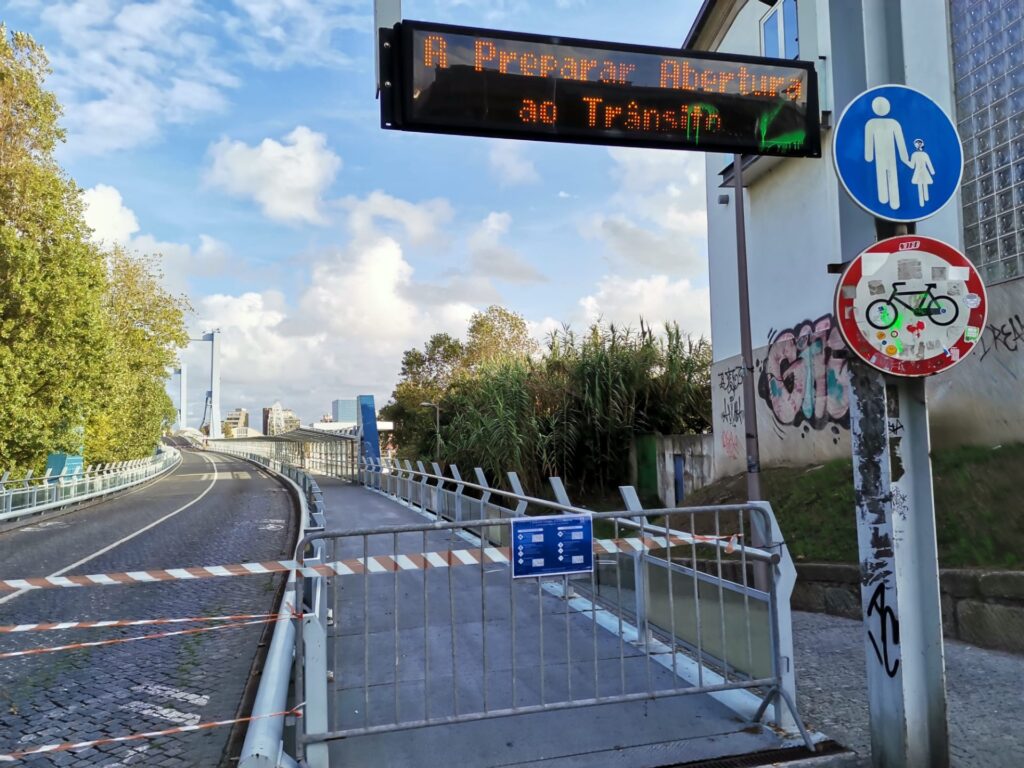
A teenager smoking a cigarette while resting against his motorbike proved to be a useful resource. I met him when trying to go up one of the cloverleaf onramp entrances for a better view and found him perched higher above. Luckily, the teenager’s English was excellent but sadly he couldn’t see a pedestrian bridge from where he was either. Ultimately, I decided to throw caution to the wind and quickly hop on the highway, cross the bridge, and then get off of it as soon as possible. Luck served me well; there was actually a sidewalk on the bridge only accessed by a hidden set of stairs. I grabbed Shaka, threw him over the guard rail, and then I was happily separated from the dangerous traffic.
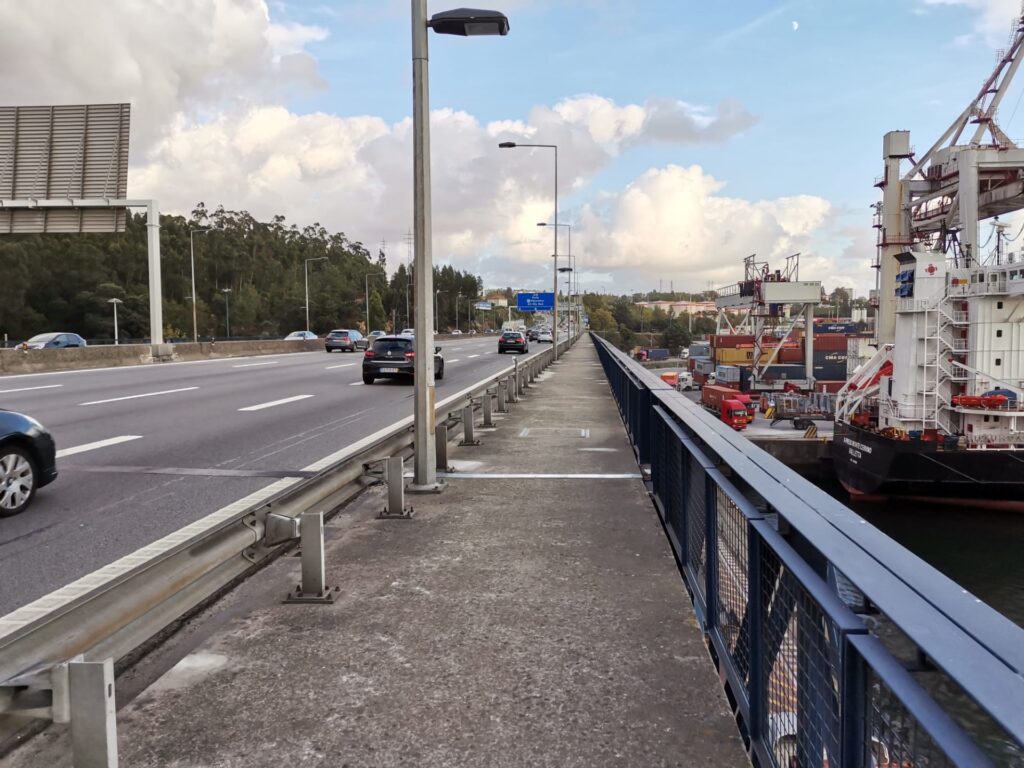
It was getting late but I still wanted to swing by the Forte de São Francisco Xavier. Built in 1662, the fort is built on the waterfront and now served me well as a picturesque backdrop for photos. Porto has the nickname of “The City of Bridges” but historically it was known as the “Cidade Invicta” / “Unvanquished City” since it has never been conquered by sea.
My final ride of the day was up the Avenida da Boa Vista. It reminded me of Barcelona since the well-protected bike paths ran through the middle of the avenue between the two directions of traffic. I took the path as long as I could, but eventually, I was back onto the city streets again. Very much becoming one with the traffic, I noticed how my brain instantly switches to a survival mode of sorts as soon as I reenter city traffic after time out in the countryside. Fighting through cities in Portugal is made even more difficult on a bike due to the preponderance of one-way streets and difficult navigation. Inspite of it all, I successfully arrived at my hotel and felt satisfied after a successful day of cycling.




